Before becoming our community of Church Point, this area was part of the Bayville Farms Estate. This area was owned by the Burroughs Family, who are the seventh title holders to the land since its original grant by King Charles II of England in 1635. Close to the present Church Point site, was the original Lynnhaven Parish Church. Records show this to have been in existence in 1639. When the channel from the Lynnhaven River to the Chesapeake Bay was cut and the area was hit by a severe storm, water rose over the old church and it was abandoned. At present, a plaque commemorating the church sits near our waterfront park. The church was later rebuilt on its present site on North Witchduck Road and renamed to Old Donation Episcopal Church.
The Mayor and City Council of Virginia Beach has appointed May 20th of every year as Church Point Day. The streets in Church Point were named from different parish churches in the Tidewater area and from crew members of the Adam Thoroughgood Grant.
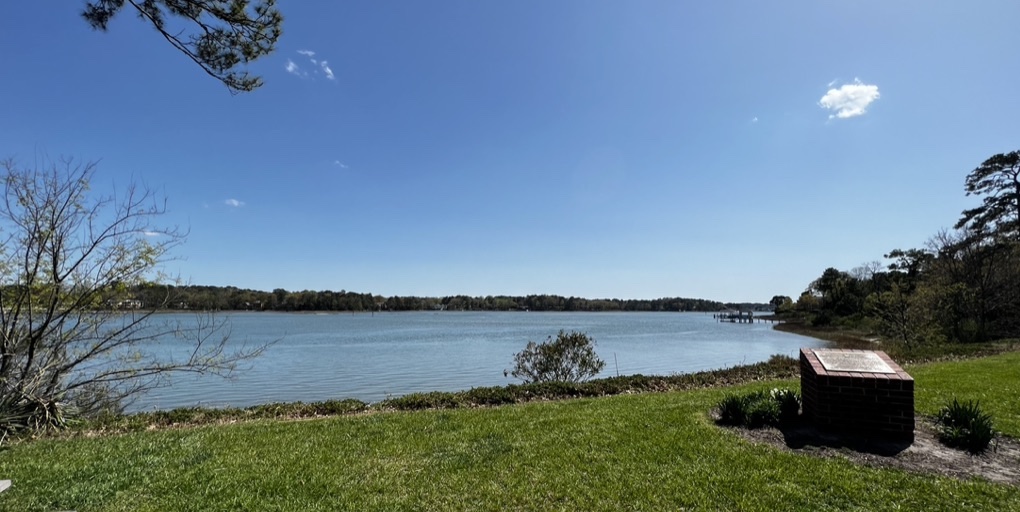
The Church Point community was developed by the Summs Group and the Burroughs Family in the 1990s in three phases. The Mews consists of single family homes on quarter acre lots designed for those who want all the amenities in their homes with little yard to maintain. The Commons consists of half acre lots surrounded by 33 acres of Parks and Trails owned by the Homeowners Association. The Quays consists of at least one acre waterfront and water view lots, that are located next to and across from the Waterfront Park on the Lynnhaven River. To get a sense of what the Church Point developers were selling, please read the original marketing trifold.
On January 26th, 1990, the Church Point Homeowners Association was incorporated in accordance with the Virginia Nonstock Corporation Act and the Virgina Property Owners’ Association Act.
Church Point was also the site of the 1992 (Oct 3-18) and 1994 (Oct 8-23) Homearama organized by the Tidewater Builders Association (now called the Coastal Virginia Building Industry Association). In 1992, 21 custom build homes were open for public viewing in the Mews. In 1994, 17 custom build homes were open for public viewing in the Commons.
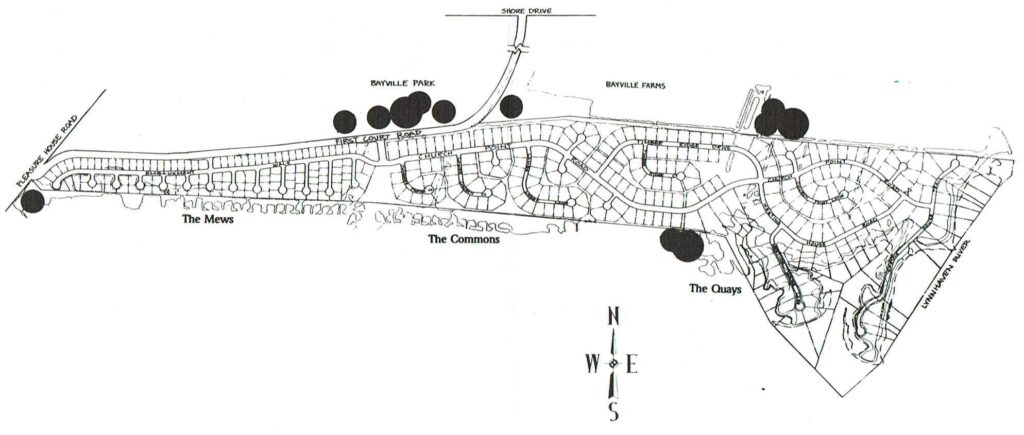
To get a sense of what has happened in Church Point since 2005, the archive of quarterly newsletters provides a wonderful chronology of issues that the Homeowners Association and its Board of Directors have dealt with. To make it easier to read the entire story in one go, excerpts from these newsletters have been collated on the following pages:
Lynnhaven Parish Church
Adam Thoroughgood (Thorowgood) was a colonist from King’s Lynn and a community leader in the Virginia Colony who helped settle the Virginia counties of Elizabeth City, Lower Norfolk and Princess Anne (known today as the independent city of Virginia Beach). Many locations in Virginia Beach, including the Lynnhaven River, Lynn Shores, Thalia Lynn, Lynnhaven Road (parkway, drive, etc.) are named after King’s Lynn.
Adam Thoroughgood created the Lynnhaven Parish Church and it is the oldest Episcopal Church in Virginia Beach. Records show that the parish’s first church services were held in 1637 in the home of Adam Thoroughgood. The first church building was constructed on Mr. Thoroughgood’s land in 1639.
In 1640, at the young age of 36, Adam suddenly became ill and died. He was buried at the Lynnhaven Parish Church.
At that point in history, the access from the Lynnhaven river to the Chesapeake bay was via Little Creek. It was a tedious 3 mile journey and fishermen where looking for a faster route. At the mouth of the Lynnhaven river there was a huge sandbar about a half-mile wide, separating the River from the Bay. A trench was dug across the sandbar wide enough for a canoe. Almost immediately after this feat was accomplished, a severe storm out of the northeast caused unusually high tides in the Chesapeake to rush through the ditch into the Lynnhaven River creating what we know today as the Lynnhaven Bay Inlet which is crossed by the Lesser Bridge along Shore Drive.
In September 1667, a powerful storm called the dreadful hurricane, struck colonial Virginia. This event is considered to be one of the most severe hurricanes to ever strike Virginia. Rain fell for 12 straight days in the wake of the hurricane. The widening of the Lynnhaven River was a result of this hurricane.
By 1691 the Lynnhaven Parish Church building had begun to deteriorate and the land around the church was slowly being eroded by the enlarged Lynnhaven River. The vestry approved the building of a new church on two acres of land purchased from Ebenezer Taylor. The second Lynnhaven Parish Church was completed in 1692.
Bayville Farm(s)
For the better part of 200 years, Bayville Farm (singular) and its manor house graced a gentle rise of land on the Lynnhave river. A Federal-style plantation home was built by Jacob Hunter in 1826 for Peter Singleton II, who inherited the property through his mother, Sukey Thorowgood. Over the years, the house, also referred to as Bayside Plantation, The Pleasure House and Bayville Manor, enjoyed a colorful history. It was sold to pay a gambling debt, lauded as a hub of Princess Anne County’s genteel society and was briefly occupied by Union troops during the Civil War.
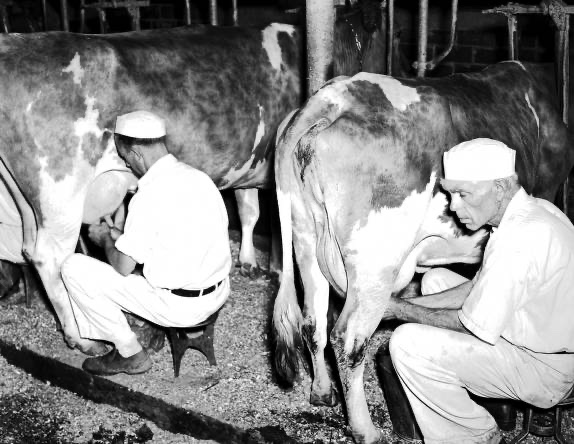
Charles F. Burroughs Sr, a successful Norfolk businessman bought Bayville Farm in 1919 with an eye to farming and oyster harvesting. Due to a health scare in the family, Mr. Burroughs started a dairy farm as he was worried about the children getting tuberculosis from unpasteurized “city milk”. In 1932, Mr. Burroughs also acquired the adjacent Church Point Farm and the combined 500 acres became Bayville Farms (plural). Charles F. Burroughs Sr died in 1960 and the farm was parceled out. Charles F. Burroughs Jr inherited Church Point Farm which was developed into residential homes and is basically Church Point as we know it today.
The original Bayville Farm was protected in 1982 from development through an easement with Virgina Outdoor Foundation and the Virginia Department of Historic Resources. In 1995, the farm became Bayville Golf Club. The milking plant was converted into the clubhouse and pro shop. The Bayville Farm manor house remained within the course environs as a stately reminder on the land’s long history. Unfortunately the wooden structure burned to the ground in August 2008 taking with it all the furnishings and historic memorabilia. The house was also removed from the Virginia Landmark Register.
This section was paraphrased from an article in the Beacon section of The Virginia Pilot dated Jan 10, 2010.
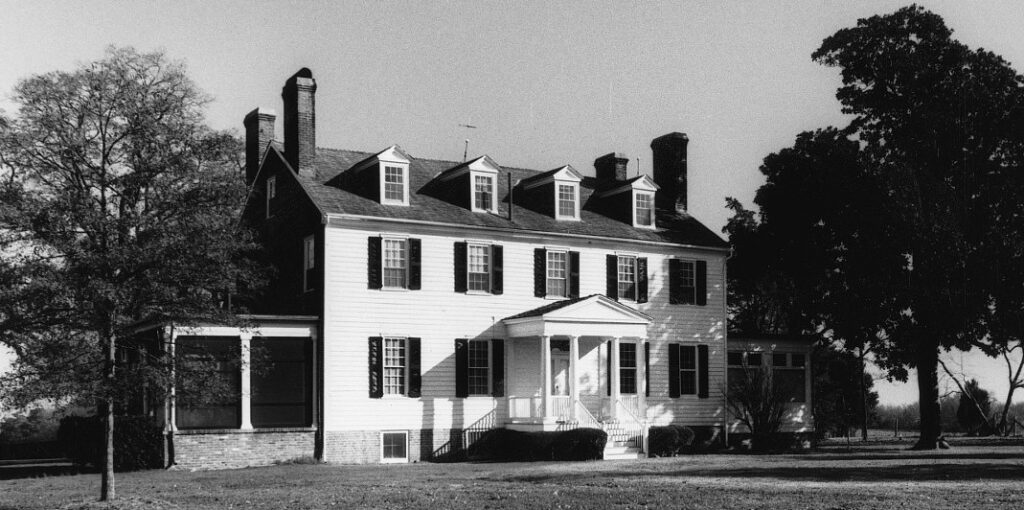
Church Point Manor House
As one of the rare surviving 19th century farmhouses in the area and listed on the Virginia Beach Historical Register, the Victorian farmhouse features the original Italianate detail at the cornices and decorative window lintels. G.G. Garrison built the house in 1860 to live near his father, who owned the nearby Bayville Manor. For the next 50 years, the farm supplied the county with the finest oysters of the Lynnhaven.
The house was then sold to Elijah Fillmore Truitt, a Norfolk man, whose family owned the house for most of the early part of the 20th century. The Burroughs family bought the property in 1932, combining the farm and its property to the adjacent Bayville Farm. Mr. Burroughs hired and housed a couple local farmers and their families throughout his years of ownership to help manage the farms: the Mast family (the 1930s) and the Porter family (1945 – 1972). The farm managers and their families lived in and worked from the Church Point Manor House, and the farm continued to grow until World War II made agricultural labor scarce.
In need of labor, the United States Army supplied the farm with a workforce of WWII prisoners of war from the nearby Camp Ashby. These laborers were paid a wage of $.80 per day — roughly equal to the daily wage of an American private. With the prisoners repatriated back to Europe in 1946, citizens of Norfolk and Princess Anne County flooded in to work Manor’s fields once again.
By now, the farm focused on dairy – providing a protein-rich, golden-hued milk from a large herd of Guernsey cattle. By 1960, the farm was the nation’s largest producer of Guernsey milk. In the 70s however, consumer demand shifted away from Guernsey milk, and the farm’s finances began to tighten.
In 1993, developer Jahn Summs purchased the historic Manor and converted the property into a charming bed & breakfast and neighborhood pub. The B&B passed through the hands of local developer and Norfolk’s Admirals hockey team owner, Mark Garcea, to businessman Gerald F McDonnell. The bed and breakfast entertained guests like President Barack Obama and Ambassador Caroline Kennedy, and the Manor’s restaurant, The Cellars, won the title of Best Restaurant in Virginia by OpenTable in 2015.
The Manor closed down in 2016 and sat vacant for two years. In 2018, the Marx family purchased the property and began a 3-year restoration that culminated in the 2021 reopening for weddings, events, and overnight stays.

Parts of this section were borrowed from the Church Point Manor Web Site.
The Thoroughgood House
Captain Adam Thoroughgood arrived in the Virginia Colony in 1621 as an indentured servant. Prospering in the New England World and serving as one of Virginia’s first Burgesses, he married Sarah Offley and recruited settlers to the colony. In the year 1635, Thoroughgood was awarded 5,350 acres of land along the Lynnhaven River. It was on this inherited land that a descendant of Adam Thoroughgood built the house that today bears his name.
The Thoroughgood House, built around 1680, is a modified hall and parlor, and is a one-half story structure. Made of local brick and oyster shell mortar, this house is bonded in English bond and Flemish bond. The leaded glass casement windows are in true 17th century fashion.
Restored in 1957, this house contains a spectacular collection of late 17th and early 18th century English furniture. The garden was a gift of the Garden Club of Virginia. Created in 1958-59 by Alden Hopkins of Williamsburg, this charming 17th century garden is on the Historic Garden Week Tour each spring.
This historic property is linked to our historic property at Church Point by sidewalks, paths and bikeways. A direct access path is located off Church Point Road between 4025 and 4029.
The Adam Thoroughgood House was designated as a National Historic Landmark in 1960 and is one of the oldest surviving colonial homes in Virginia. The House is open four days per week for guided tours. Special programs for schools, scouts and the general public are offered throughout the year. The Adam Thoroughgood House has been operated by the Department of Museums and Cultural Arts since 1999 and was aquired by the City of Virginia Beach in 2003. For more information, see the Virginia Beach History Museums website.
This section was taken from the Virginia Beach, Virginia City Web Site.
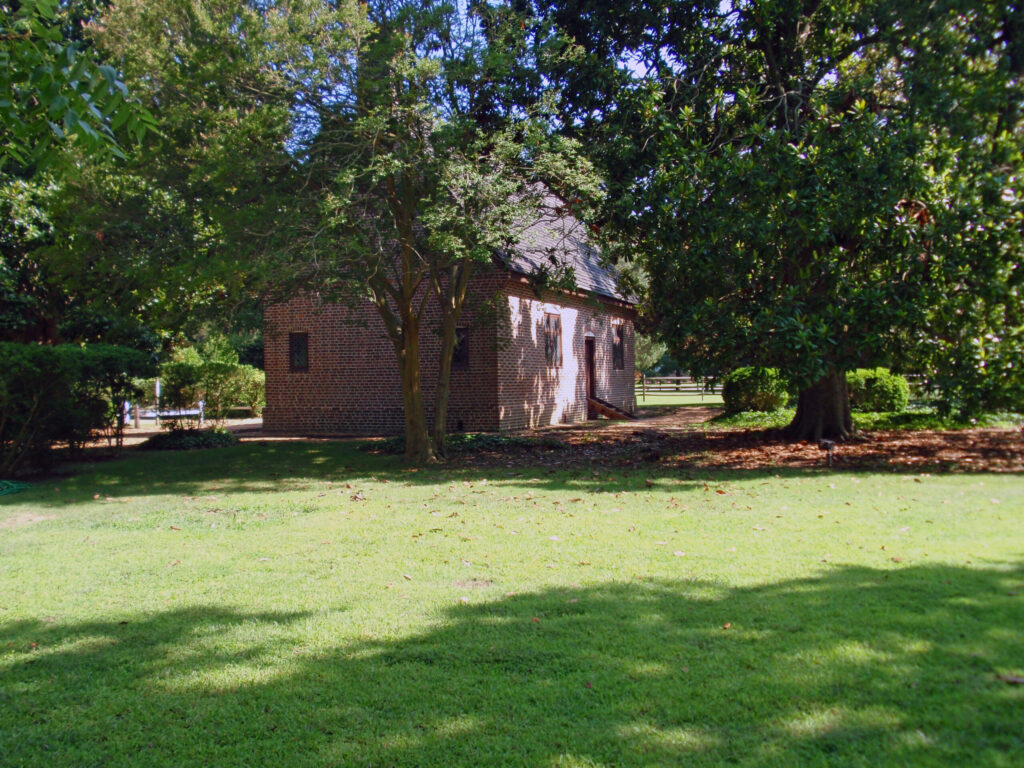
Aerial Perspective





